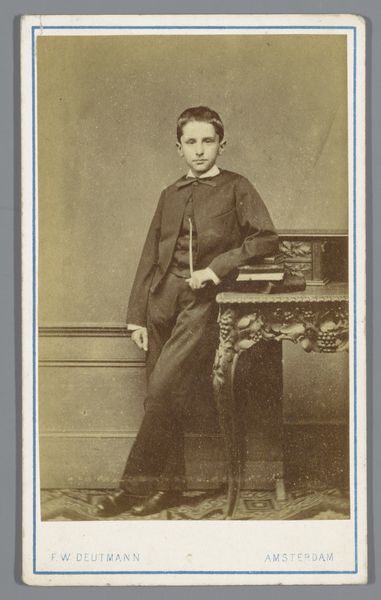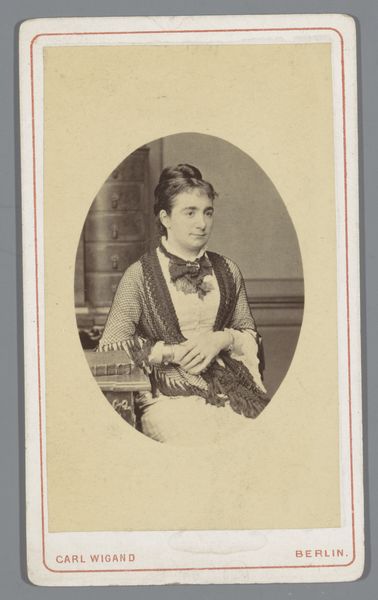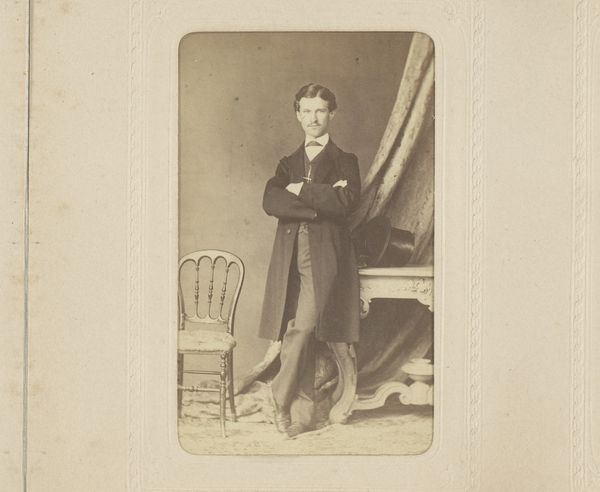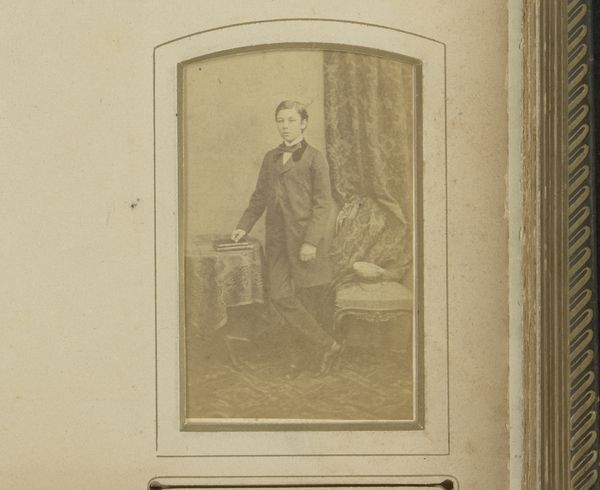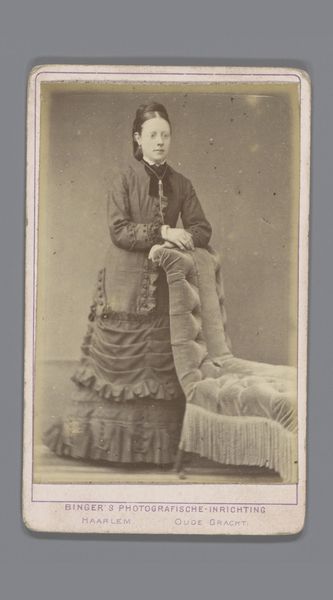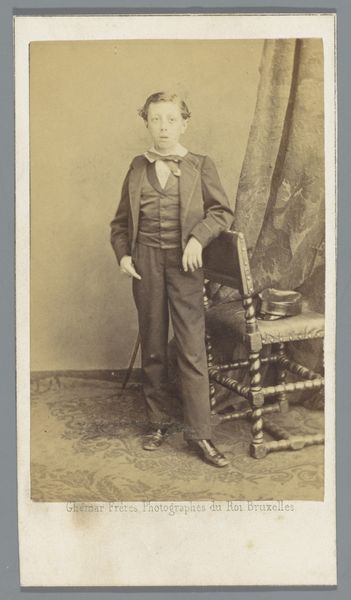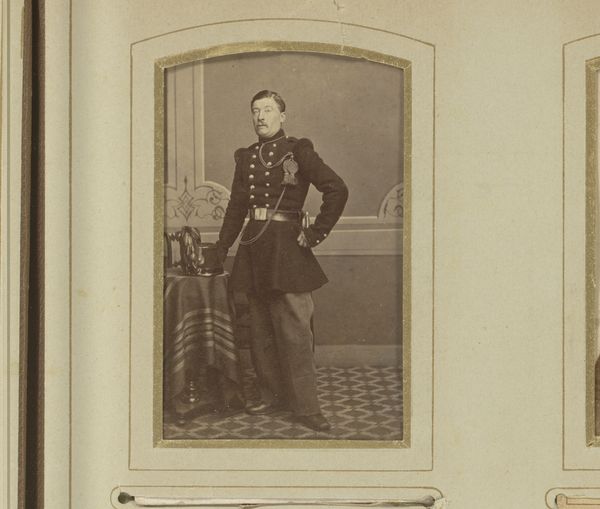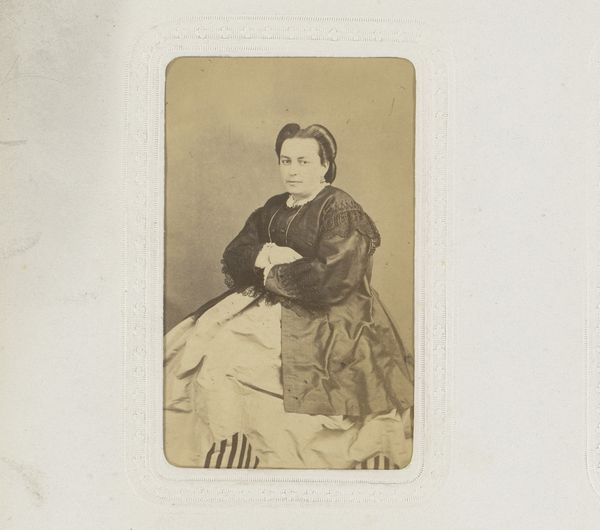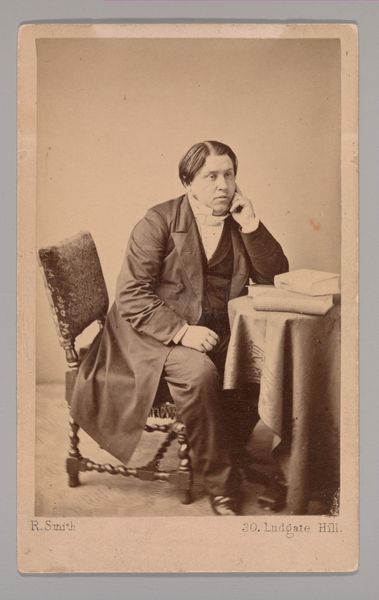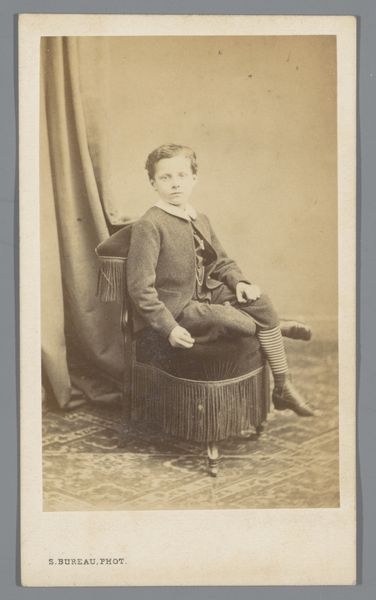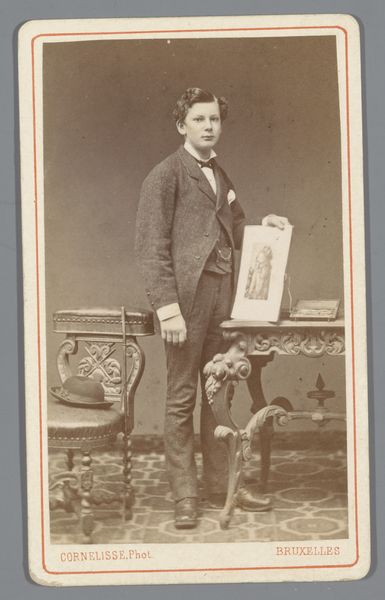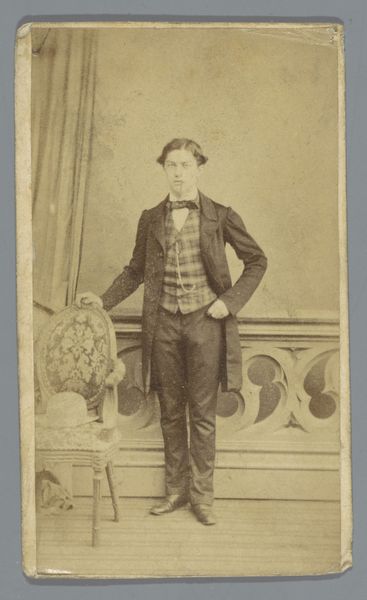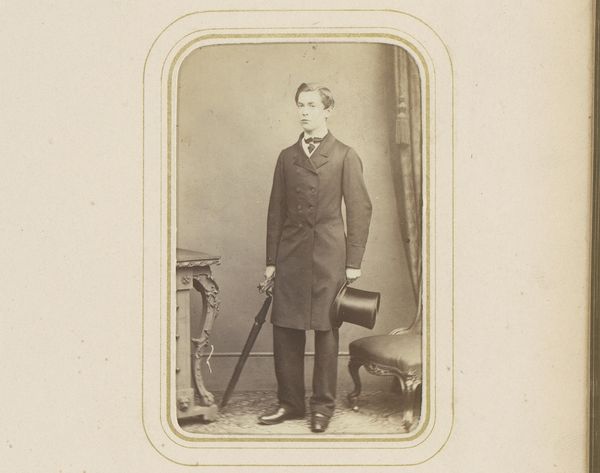
Portret van een onbekende jongen, zittend op tafel met een opengeslagen boek in zijn handen 1854 - 1889
0:00
0:00
paper, photography
#
portrait
#
paper
#
photography
#
academic-art
#
paper medium
Dimensions: height 104 mm, width 61 mm
Copyright: Rijks Museum: Open Domain
Curator: Let's discuss this captivating portrait, "Portret van een onbekende jongen, zittend op tafel met een opengeslagen boek in zijn handen" by Disdéri & Co., sometime between 1854 and 1889. Editor: My initial impression is one of calculated stillness. The monochrome tones enhance a sense of serious self-possession, a posed tableau frozen in time. Curator: Absolutely, but let's consider this 'stillness' in context. During this era, photography served emerging social stratifications. To have one’s portrait taken wasn't merely documentation; it was a carefully orchestrated act of self-representation, particularly for rising bourgeois families keen on solidifying their social status through the visual rhetoric of gentility and learning. Editor: I agree, and the composition itself underlines your points about class. The boy, poised somewhat casually on a fringed table, centers the frame. An ornate chair and draped backdrop add layers to the narrative, while emphasizing the sitter's affluence and cultivating the air of academic intellectualism that defines academic portraiture. Curator: I'm glad you picked up on that staging, that air of casualness. This seemingly unguarded moment is entirely constructed. His attire, too—dark suit and bowtie—signifies a performance, and to whom? He is perhaps the product of societal pressures. In its artificiality, we discern the expectations placed on young men of that era—studiousness and success as gateways into privilege. Editor: Agreed. It's an orchestration of shape, shadow, and subject position within the frame itself, creating an interesting depth through carefully orchestrated elements. How do you feel that paper, as a medium, affects its meaning, given its nature and creation? Curator: Paper emphasizes both the democratization and potential ephemerality of photographic portraiture during this time. Disdéri was pioneering mass-produced portraiture and, here, this carte-de-visite allows such imagery and associated values to spread. Though seemingly mundane now, the image captures so many key tensions about social mobility. Editor: A compelling observation. It certainly makes you ponder how that relates to his identity. Curator: Indeed, and to a broader critical questioning around representation and visual communication in this period.
Comments
No comments
Be the first to comment and join the conversation on the ultimate creative platform.
